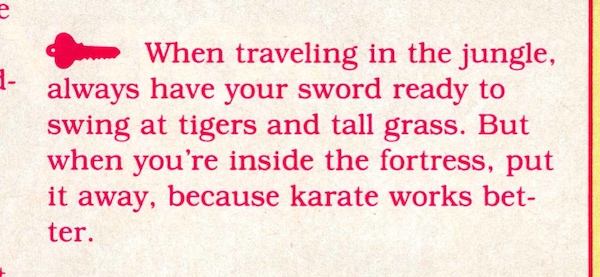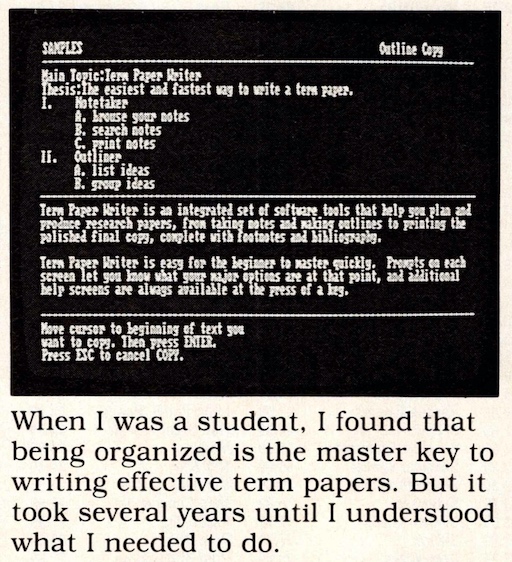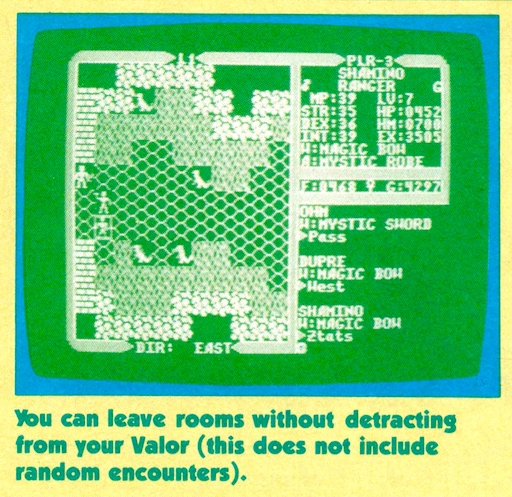 Chatbot-derived AI will be let loose on internal codebases at tech companies and coders will leverage it by asking it to auto-complete chunks of API, search for bugs, or pose questions like 'is there a way to optimize this?' and 'What changes do I need to make to this to make it run with the new OS?'
Chatbot-derived AI will be let loose on internal codebases at tech companies and coders will leverage it by asking it to auto-complete chunks of API, search for bugs, or pose questions like 'is there a way to optimize this?' and 'What changes do I need to make to this to make it run with the new OS?'And then, wind forward ten years for the computing power and capacity to catch up, until... "Show me this scene again except have the part of Fred be played the way Christopher Walken would play it."
And then ... "Here are 50 episodes of Scooby Doo. Make me fifty more, except insert a character arc where Velma and Daphne become radicalized by Boko Haram and eventually 'solve' all the mysteries through the application of torture and austere religious deprivation."
Presto, fifty hours of new content, tailored to keep stoners and children amused, but with an evil twist. And the question comes up forever and ever: "Who owns this? Do we owe the original cast anything? The original animators? The composer that wrote all the musical cues we're remixing?"
"Does Frank Welker have a right to royalties on performances that reconstruct his own personal voicing of Fred? Or is this all owned by Viacom and two fingers to everyone else? Or is this all owned by Oleg Heyoushenkovich, Russian billionaire, generating propaganda-laced remixes of cartoons and handing them out for free, backed by and protected by the Russian state?"
So that's round one of what this will look like. Round two is, instances of this will become interconnected to enforce rights management.
And copyright will be legally extended by tech and media giants to INCLUDE derivative works in a way that attempts to effectively colonize the very imaginations of all currently living people, to extract money from them for re-inventing something similar to a thing that a long-dead person did once, which the company has now absorbed and licensed and laid permanent, eternal claim to. Like Disney stretching copyright law into taffy for the sake of a dancing mouse, except covering the way a thing seems or feels, and enforced by the device running on your face.
 So for now, we have about three years before it all starts going to hell.
So for now, we have about three years before it all starts going to hell.By then, any time we call a business of any size on the phone, we will EXPECT to be talking to a robot, at least for the first minute or so of the call.
The expectation that a real human will be on the end of the line will drop so low that people will start experiencing "robot rage", where they're on the receiving end of people who are extremely rude and nasty because those people think they're talking to a robot.
As an employee, you'll pick up the phone, and one out of every ten calls, someone will say "F%&$* GET ME A ROAST F!%%# LATTE NOW, WITH SPRINKLES, AND I'M PICKING IT UP IN TEN MINUTES YOU $%*(#@ %*(ING @#$%, SO IT BETTER BE &$#% READY."
In less than three years, you'll get used to seeing AI-generated artwork in advertising, of all kinds, at all levels. It will get progressively worse even though the software will be improving, because the artists have all been fired or quit, and so there's nobody left to do clean-up artwork.
Similar effects on "copypasta" copywriting that is already really low-grade, and already accounts for a lot of the drivelposts intended to resell other people's content, slathered with advertising on social media networks.
In time, the software will get better at carrying on dialogue, and will incorporate pre-existing research in physical emoting, developed by roboticists. You will slowly get used to an online world that is populated by a significant percentage of artificial people. And in a little more time, you will stop caring whether the entities you spend time with there are human. In fact, you will find things generally go easier if there is at least one artificial person involved in most of your conversations. Eventually your private conversations will be colonized this way as well.
Then after a bunch of digging around in old Asimov novels, grad theses written about World Of Warcraft and Second Life, and a churning period of what Facebook's Zuckerberg quaintly calls "PR fires" for the providers of these worlds, standards will emerge.
Like Frank Herbert's characters disavowing all technology that aims to supplant human dominance, we will hammer out ground rules for the representation of artificial people in a mixed environment.
It's hard to say what these rules will look like, but I suspect at least one of them will be, "All representations of people that provide any kind of interaction will be visually and audibly LABELED as artificial." And probably some knock-on rules about behavior, e.g., "no lifelike simulation of a human will provide interaction designed to cause psychological harm, outside of a clearly delineated entertainment setting, and without proper effort to ensure the subject of the interaction is an adult."
With rules like this in place, the corporate world will be given the declaration of "safe", enough to do things like create solid-state VR instructors that provide one-on-one teaching to children, with a degree of sensitivity and adaptability derived and refined from thousands of the finest teachers in the world.
I mean, getting a kid to understand algebra is hard. Why pay a human to do it? Just put on the dang goggles and let R. Daneel Olivaw guide them effortlessly, without ever getting angry or tired.
And all you gotta do is make them watch a few ads afterwards. (Don't try and take the goggles off beforehand. It tracks your kid's eyes. It KNOWS when they're looking, and when they're not.)
Take the ads. Right in the face. Smile like you want them. Freaking smile. Wider. Now dance the special dance that's part of the theme song. Do it so everyone around you can see. And so it becomes muscle memory, literally, and you think of the product whenever you move from now on. LIKE YOU LIKE IT, you CONSUMER. The goggles CAN TELL when you like it, better than you can. You gave the goggles the right to assemble this information about you and share it with any company that has money to pay. You gave them that right when you put them on, which is a physical action that has been interpreted by a court of law to be equivalent to "consent" to a 130-page document that's available in a locked filing cabinet in a disused lavatory back at the company HQ if you're curious enough to barge in there and read it. (But beware the leopard.)
I reckon it'll start with teachers. Instructors. Like videos telling you how to change a bike tire, but guided by interactive AI. Then "real" teachers will start assigning interaction with Microsoft-driven AIs as homework. Not for any endorsement deal or kickback, but just because it'll make their teaching life easier, because they're overworked already and paid in circus peanuts.
(Fun fact: A limited version of this is happening already. College students are feeding homework from their professors into ChatGPT and asking it to explain the assignment to them, using language easier to understand than what their professors used. No one considers this cheating, and why would they? It's just a tool for a job.)
Soon the AI will be the one administering the tests. Because seriously, how in the world would you be able to afford a personal tutor for every subject, who's gonna watch your kid write out every digit of a math problem with digital eyes, and gently guide their hand? The tech is a godsend to struggling parents from the third-world on up.
And up, to the highest echelons of the upper class, who will take thousand-dollar-an-hour "exclusive" guided instruction from AIs designed to teach them the finer graces of liberal arts.
And alongside this... We will have the military applications.
Yeah there's the psychological warfare and the propaganda and all that ... That's already here, in cruder form. Whole message boards spun up out of nothing with convincing "dialogue" between "debaters", swaying the lurker towards some opinion. Been there done that.
 Where this really gets interesting is the simulation of interacting crowds. Groups of people. Predicting what an individual will do is hard. There's a lot of detail to process. A lot of random factors interfering. Predicting what a group of people will do, when you can observe them all at once - even for a short while - and apply what you see to a model... That might be easier.
Where this really gets interesting is the simulation of interacting crowds. Groups of people. Predicting what an individual will do is hard. There's a lot of detail to process. A lot of random factors interfering. Predicting what a group of people will do, when you can observe them all at once - even for a short while - and apply what you see to a model... That might be easier.That might be easy enough to sabotage markets, derail political campaigns, spin up paranoia over innocuous events, and so on, all handily below the threshold of identification, because no one speaker or source pushed it over the tipping point. It was just something you heard coming from the infotainment screen at the gas station, combined with something you saw drifting by in your social media feed, plus a comment from your personal AI assistant reading you the news before bed, and suddenly an idea occurs to you...
I gotta wonder, how will any citizenry dismantle such a powerful combination of corporate interests and national interests, aside from literally smashing it?
Folks like Jello Biafra and Michael Franti used to call out television as the drug of the nation, and a route towards sameness, mediocrity, and apathy. But this ... This is software that can get out ahead of any collective revolutionary idea, and neutralize it with passionate reasoning in the other direction, or just a well-placed joke, and it will be utterly invisible, because it will be threaded into a dozen conversations we have with various AI that we've already invited into our homes, our bedrooms, our minds. And will we care?
Don't you already feel like your life would be calmer, more orderly, even more entertaining and interesting, if you could interact with a cadre of unerringly supportive, cheerful, and eager assistants for most of the day?
Don't you feel like you would actually trust a robot MORE than a human, to provide psychotherapy, give feedback on your essay, show you how to change a tire, help you compose a difficult letter, make telephone calls on your behalf, tell you jokes without offending you, sing you the same song 20 times without getting annoyed, et cetera...?



















 Here's an example that should be close to everyone here, i.e. software developers: You sit down in a coffee shop with a foldable keyboard in front of you, and put on the VR headset. You bring no laptop with you, and no notebooks or manuals either. As soon as the headset is in place, external cameras on it immediately recreate the view around you as-is, but slightly dimmer. Then in front of you (in the virtual space), half a dozen five-foot-high curved screens of code appear, in precisely the configuration you left them 20 minutes ago when you left the house.
Here's an example that should be close to everyone here, i.e. software developers: You sit down in a coffee shop with a foldable keyboard in front of you, and put on the VR headset. You bring no laptop with you, and no notebooks or manuals either. As soon as the headset is in place, external cameras on it immediately recreate the view around you as-is, but slightly dimmer. Then in front of you (in the virtual space), half a dozen five-foot-high curved screens of code appear, in precisely the configuration you left them 20 minutes ago when you left the house.
















 20 years ago, as a joke, my friends and I formed an industrial plunderphonics band in a garage in the Lee Vining desert, and have been irregularly posting "albums" freely online. I'm proud of them and they were great fun to make and brilliant in places, but they are also loud, profane, absurd, and mostly terrible, and I have made sure to never mention them to anyone I work with. Of course, thanks to the insidious efficiency of Google, the band website comes up when you enter my name in their search engine. Cat's out of the bag. Technically all that crap is just a Google away from anyone who wants to learn about my awful creativity. As far as I know, no one I work with has. (Though how would I know?)
20 years ago, as a joke, my friends and I formed an industrial plunderphonics band in a garage in the Lee Vining desert, and have been irregularly posting "albums" freely online. I'm proud of them and they were great fun to make and brilliant in places, but they are also loud, profane, absurd, and mostly terrible, and I have made sure to never mention them to anyone I work with. Of course, thanks to the insidious efficiency of Google, the band website comes up when you enter my name in their search engine. Cat's out of the bag. Technically all that crap is just a Google away from anyone who wants to learn about my awful creativity. As far as I know, no one I work with has. (Though how would I know?) So today, if I put anything online without a filter, I am now cannon fodder for the entities that feed and manipulate that horde of newcomers. When I put something online, it potentially reaches everyone, but most likely, it remains totally buried in the flood of other stuff until an algorithm plucks it out of the current and decides to show it to thousands, then millions, of people I have no interest in reaching. And they will feel upset, offended, and vengeful, because that's what algorithm is designed to evoke. Conflict sells ads. And, there's no better distraction to cover your skullduggery than dropping a turd in the public pool.
So today, if I put anything online without a filter, I am now cannon fodder for the entities that feed and manipulate that horde of newcomers. When I put something online, it potentially reaches everyone, but most likely, it remains totally buried in the flood of other stuff until an algorithm plucks it out of the current and decides to show it to thousands, then millions, of people I have no interest in reaching. And they will feel upset, offended, and vengeful, because that's what algorithm is designed to evoke. Conflict sells ads. And, there's no better distraction to cover your skullduggery than dropping a turd in the public pool. But, all the wall climbing and parkour that these characters do is deceptive. Every other move they make defies gravity, and it's too easy to think "hey, if I got in better shape, I could do the same stuff!" No. Ten seconds hanging off the edge of a building by my fingertips is already way too long.
But, all the wall climbing and parkour that these characters do is deceptive. Every other move they make defies gravity, and it's too easy to think "hey, if I got in better shape, I could do the same stuff!" No. Ten seconds hanging off the edge of a building by my fingertips is already way too long. The old job was being cut due to lack of funding. I was going to spend a while "funemployed" after that, but with a couple weeks to go I changed my mind and hit the job market. During those few days I brushed up my interview skills. This drove me a bit bonkers.
The old job was being cut due to lack of funding. I was going to spend a while "funemployed" after that, but with a couple weeks to go I changed my mind and hit the job market. During those few days I brushed up my interview skills. This drove me a bit bonkers.